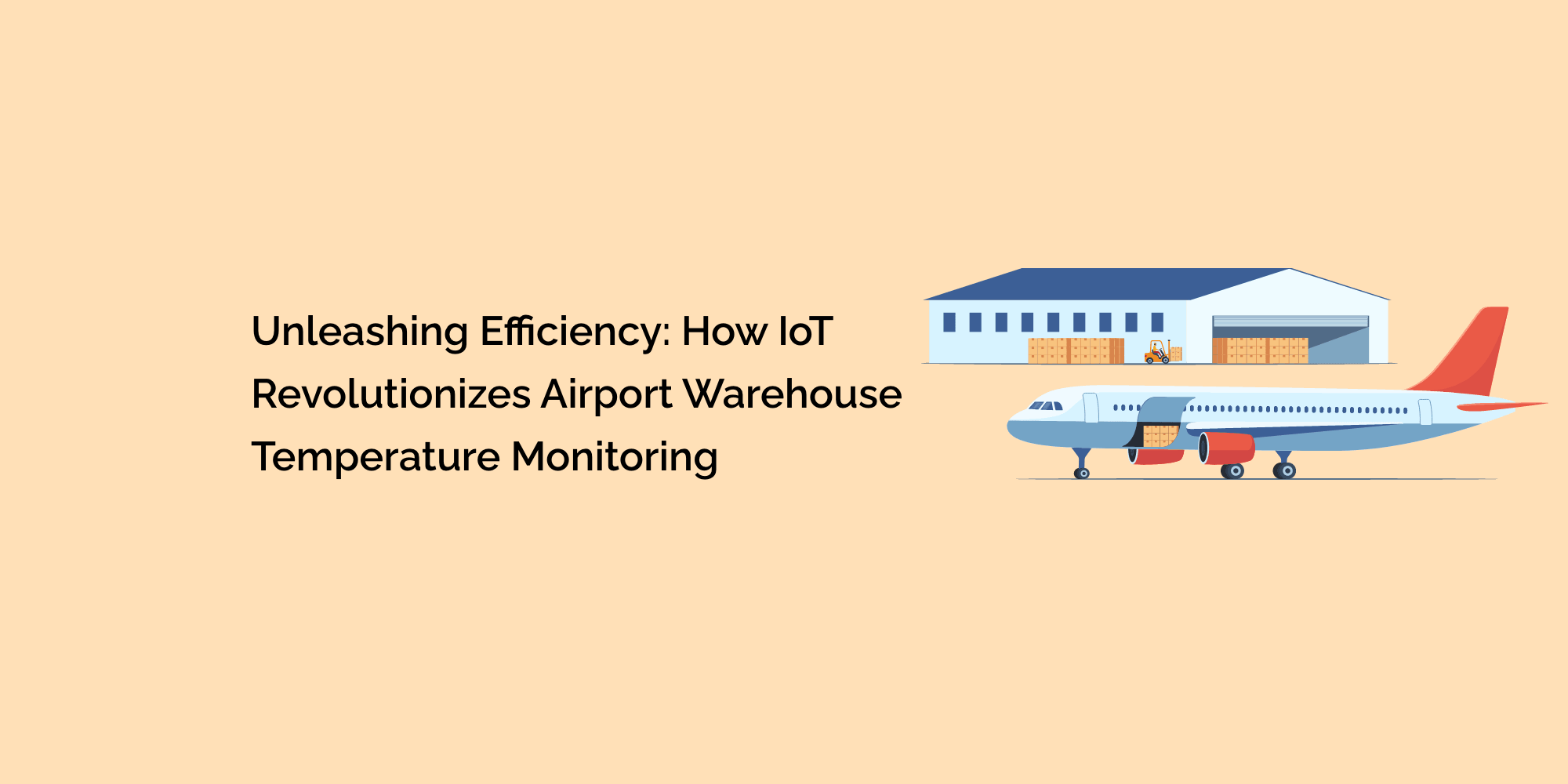Airport warehouses play a crucial role in the logistics industry, serving as hubs for the storage and transportation of goods. Maintaining optimal temperature conditions within these warehouses is essential for preserving the quality and integrity of various items, including perishable goods and sensitive cargo.
In the past, temperature monitoring in airport warehouses was a manual and time-consuming process. However, with the advent of the Internet of Things (IoT), temperature monitoring has been revolutionized, unleashing unprecedented efficiency and accuracy.
In this blog, we will explore how IoT technology has transformed airport warehouse temperature monitoring and discuss the advantages it brings to the industry.
Advantages of IoT-Based Temperature Monitoring:
Real-Time Data Collection: IoT-enabled temperature monitoring systems provide continuous and real-time data collection. This allows warehouse operators to have up-to-the-minute information about temperature conditions, ensuring proactive management and intervention if deviations occur.
Enhanced Accuracy and Precision:
Traditional temperature monitoring methods often rely on manual measurements, which can be prone to human error. With IoT devices, accurate and precise temperature readings are obtained through automated sensors, reducing the chances of inaccuracies and improving the overall reliability of the monitoring system.
Remote Monitoring:
IoT-based temperature monitoring systems enable remote monitoring, eliminating the need for manual checks. Warehouse operators can access real-time temperature data from anywhere, allowing for timely decision-making and interventions, even if they are not physically present in the warehouse.
Alerts and Notifications:
IoT devices can be programmed to generate real-time alerts and notifications when temperature thresholds are breached. This ensures immediate awareness of temperature fluctuations and allows warehouse personnel to take prompt action to mitigate potential risks to the stored goods.
Data Analytics and Insights:
IoT-generated temperature data can be analyzed to identify patterns, trends, and anomalies. Advanced analytics can provide valuable insights into temperature variations, helping warehouse operators identify potential issues, optimize processes, and make data-driven decisions.
Predictive Maintenance:
With IoT technology, temperature monitoring systems can analyze historical data and patterns to predict potential equipment failures or malfunctions. This enables proactive maintenance, reducing downtime and minimizing the risk of temperature deviations that could impact the stored goods.
IoT Sensors and Devices for Temperature Monitoring:
Types of IoT Sensors: IoT temperature monitoring systems utilize various types of sensors, such as thermocouples, resistance temperature detectors (RTDs), and thermistors. These sensors are designed to accurately measure temperature and provide reliable data for analysis and monitoring.
Placement and Installation:
The strategic placement of IoT sensors within the airport warehouse is crucial for optimal data collection. Sensors should be positioned in areas where temperature deviations are most likely to occur, such as near air conditioning units or in proximity to temperature-sensitive goods.
Connectivity Options:
IoT devices for temperature monitoring can utilize different connectivity options, including Wi-Fi, Bluetooth, and cellular networks. The choice of connectivity depends on factors such as the size of the warehouse, network availability, and the desired level of data transmission speed.
Power Management:
Efficient power management is essential for IoT devices to ensure continuous operation. Battery-powered sensors may require regular maintenance and replacement, while devices with wired power connections may offer greater reliability but require careful consideration of wiring infrastructure.
Integration with Existing Systems:
IoT temperature monitoring systems can integrate with existing warehouse management systems (WMS) or other data platforms, enabling seamless data flow and centralized monitoring. Integration allows for more efficient operations and comprehensive oversight of temperature conditions.
IoT Platforms and Cloud-Based Solutions:
Cloud-Based Data Storage:
Storing temperature data in the cloud offers numerous advantages, including easy accessibility, scalability, and data redundancy. Cloud-based solutions also facilitate data sharing among authorized stakeholders and enable remote access to temperature data from multiple devices.
Data Security and Privacy:
IoT-based temperature monitoring systems must prioritize data security and privacy. Implementing encryption protocols, access controls, and robust authentication mechanisms helps safeguard sensitive temperature data and prevent unauthorized access or tampering.
Analytics and Visualization:
IoT platforms provide tools for data analytics and visualization, allowing warehouse operators to gain actionable insights from temperature data. Advanced analytics techniques, such as machine learning algorithms, can identify trends, anomalies, and predictive patterns, enabling proactive decision-making.
Reporting and Compliance:
IoT-based temperature monitoring systems offer reporting capabilities to meet compliance requirements. Automated reporting can streamline regulatory compliance by generating accurate and comprehensive reports on temperature conditions within the warehouse.
Overcoming Challenges and Considerations:
Network Connectivity:
Large warehouse environments may pose challenges in terms of network connectivity for IoT devices. Implementing robust networking infrastructure, including Wi-Fi access points and cellular signal boosters, can help ensure reliable and uninterrupted connectivity throughout the warehouse.
Data Management and Analysis:
Managing the vast amounts of data generated by IoT devices requires careful consideration. Implementing effective data storage, retrieval, and analysis processes, including data archiving and backup strategies, can help warehouse operators efficiently manage and utilize temperature data.
Scalability and Future-Proofing:
Scalability is an important consideration when implementing an IoT-based temperature monitoring system. Warehouse operators should select solutions that can scale with their business needs and adapt to future technological advancements to ensure long-term efficiency and effectiveness.
Cost and Return on Investment:
Implementing an IoT-based temperature monitoring system involves upfront costs for devices, sensors, infrastructure, and integration. However, the potential return on investment (ROI) lies in improved operational efficiency, reduced losses, enhanced product quality, and compliance with regulations. Evaluating the ROI over the long term is crucial when considering the cost-effectiveness of IoT solutions.
Conclusion:
The advent of IoT technology has transformed airport warehouse temperature monitoring, unleashing efficiency and accuracy that was previously unattainable. Through real-time data collection, enhanced accuracy, remote monitoring capabilities, and advanced analytics, IoT-based temperature monitoring systems offer numerous benefits to airport warehouses.
Overcoming challenges related to network connectivity, data management, scalability, and cost considerations is essential for successful implementation. By harnessing the power of IoT, airport warehouses can optimize operations, reduce costs, and ensure the preservation of product quality and integrity. Embracing IoT revolutionizes temperature monitoring, empowering airport warehouses to meet industry demands and deliver exceptional service in an increasingly competitive logistics landscape.








